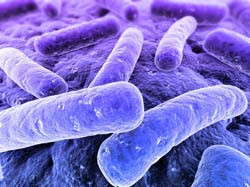Advancing anti-microbial targeting
Cell cycle is one of the most fundamental processes in biology as it encompasses key events in the maintenance and propagation of living cells. Similar to any cell, bacteria also duplicate their chromosomal DNA before they divide. Mechanistically the process differs from that of a eukaryotic cell but actively contributes to bacterial pathogenesis. The scope of the EU-funded COSP (Identification and characterization of factors involved in chromosome organization and septum positioning in bacteria) project was to identify novel factors that help bacteria organise their genetic material and segregate it efficiently. They used the soil bacterium Bacillus subtilis, an excellent model for studying the bacterial cell cycle for their studies. This bacterium is capable of forming tough endospores and becoming metabolically dormant to survive in adverse conditions. During sporulation, bacteria undergo profound molecular and morphological changes such as remodelling of the two progeny cells. In the first stages of sporulation, the cellular part that eventually becomes the spore contains only the part of the duplicated chromosome which surrounds the origin of chromosome replication (oriC). For the entire chromosome to move into the spore, SpoIIIE is required. It is known that SpoIIIE mutants abolish proper chromosome segregation. To induce sporulation, researchers grew bacteria and then starved them. By exploiting the different genetic programmes of pre-spore and mother cells, they generated constructs that helped them understand which proteins are implicated in chromosomal segregation changes. Their screen unveiled mutants of three genes associated with perturbed localisation of the oriC. Further analysis provided important insight into the functional role of these genes. Information on the bacterial cell cycle and chromosome organisation is anticipated to contribute to antimicrobial drug development.







